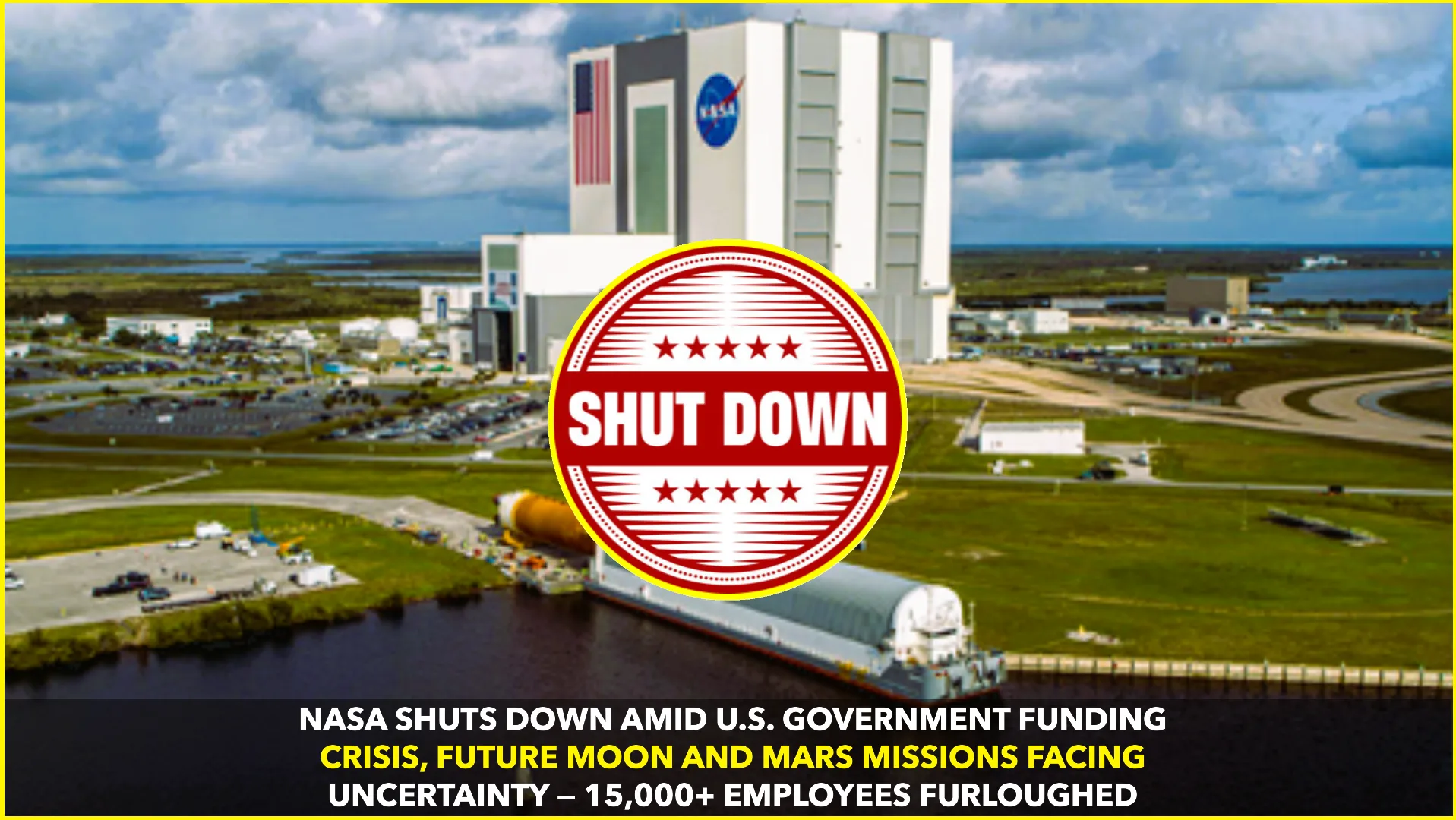In a historic move, NASA has announced the closure of most of its operations due to the ongoing U.S. government shutdown and a freeze on federal funding. The space agency revealed that more than 15,000 employees — nearly 83% of its workforce — have been furloughed, leaving only a fraction to continue essential operations like maintaining spacecraft and astronaut safety (Houston Chronicle).
What Will Continue and What Will Stop
NASA’s continuity plan prioritizes missions critical to life and property, such as keeping the International Space Station (ISS) running and satellite communications stable. Other programs like Artemis, the U.S. moon-landing initiative, are partially protected but could still face disruption if the shutdown drags on (Space.com).
Public tours, NASA TV, educational outreach, and most research grants are on hold. Even official NASA websites and social media platforms will see little to no updates, severing a crucial link between the agency and the public. Visitor centers such as Space Center Houston will remain open, but NASA-run tours and on-site programs are suspended (Houston Chronicle – Space Center).
Potential Consequences for Space Exploration
1. Scientific Delays
Ongoing research projects are left in limbo, potentially losing critical data. Many labs are shut, and scientists funded by NASA grants may face weeks of inactivity.
2. Artemis Moon Missions
The shutdown threatens to delay the carefully planned Artemis II and Artemis III missions, which already operate on tight schedules. Even small interruptions now could push back future launch windows significantly.
3. Workforce Morale
Extended furloughs could demoralize NASA’s workforce. Experienced engineers and researchers may leave for more secure opportunities, creating a long-term brain drain.
4. Global Partnerships
International partners like ESA and JAXA depend on NASA’s commitments. Delays could strain collaborations and allow rival space programs to gain an edge.
5. Public Trust
The sudden disappearance of NASA’s public outreach may reduce its visibility, weakening its inspirational role in society.
A Costly Shutdown
Economists warn that the broader U.S. government shutdown is already draining billions from the national economy. Agencies like NASA are particularly vulnerable because so much of their work requires continuous funding and long-term planning. Experts suggest that even a two-week suspension could cause major delays, and if it stretches further, the costs will multiply across future projects (Washington Post).
Will This Change the Future of Space Exploration?
The big question is whether this shutdown will leave a lasting scar on NASA’s ambitions. If lawmakers resolve the crisis quickly, the impact could be limited. But if the funding freeze lingers, delays in lunar missions, deep space probes, and Earth science research could set back progress by months, even years.
The timing couldn’t be worse: with renewed global competition in space, including China’s accelerated lunar program, the U.S. risks losing ground if NASA is forced to pause.
Final Thoughts
The shutdown serves as a stark reminder that even the world’s most advanced space agency is not immune to politics and budgets. NASA’s fate now hinges on how quickly Congress and the White House can strike a funding deal.
Until then, the dreams of returning to the Moon and one day reaching Mars remain in jeopardy. 🌌










